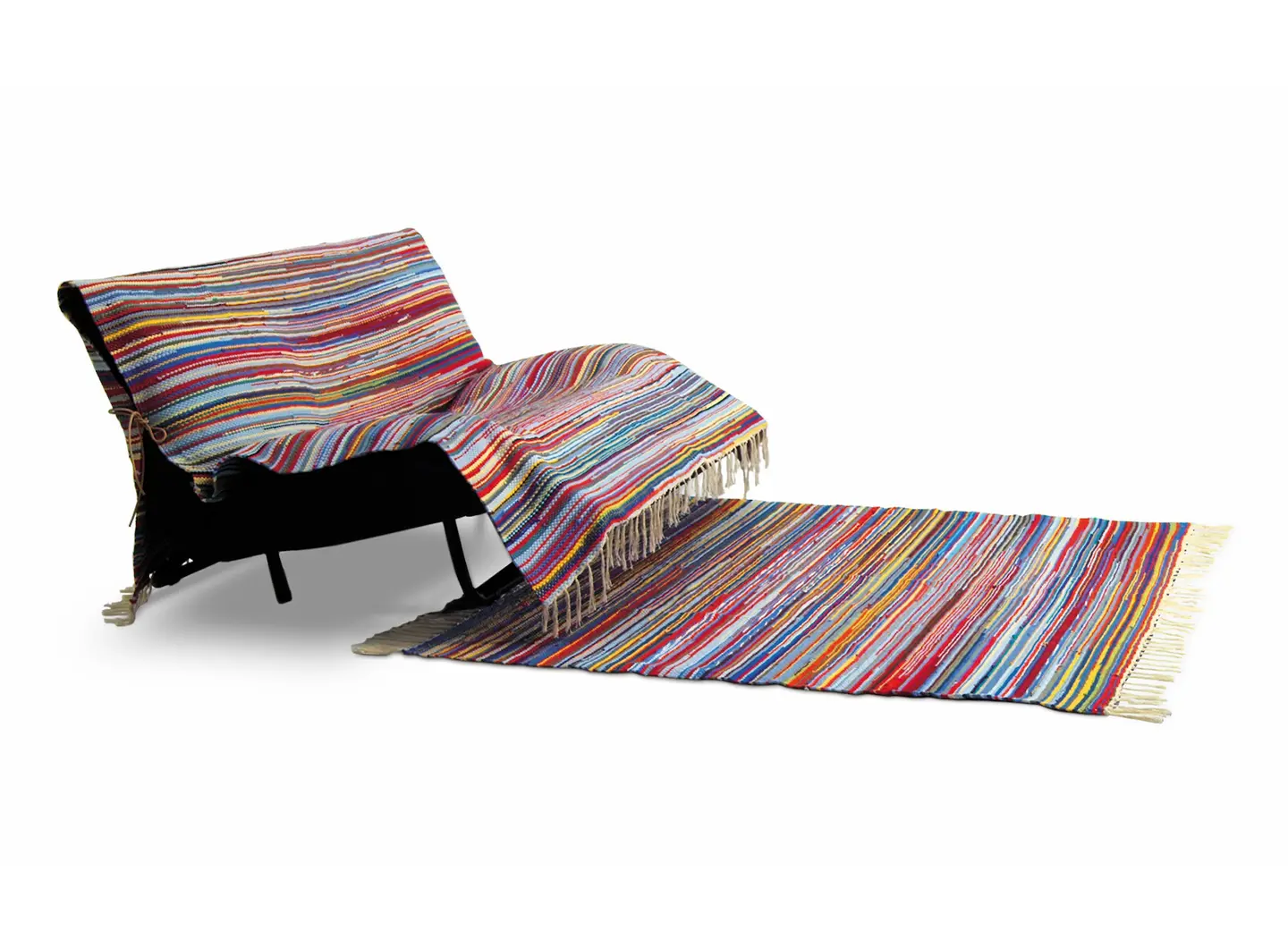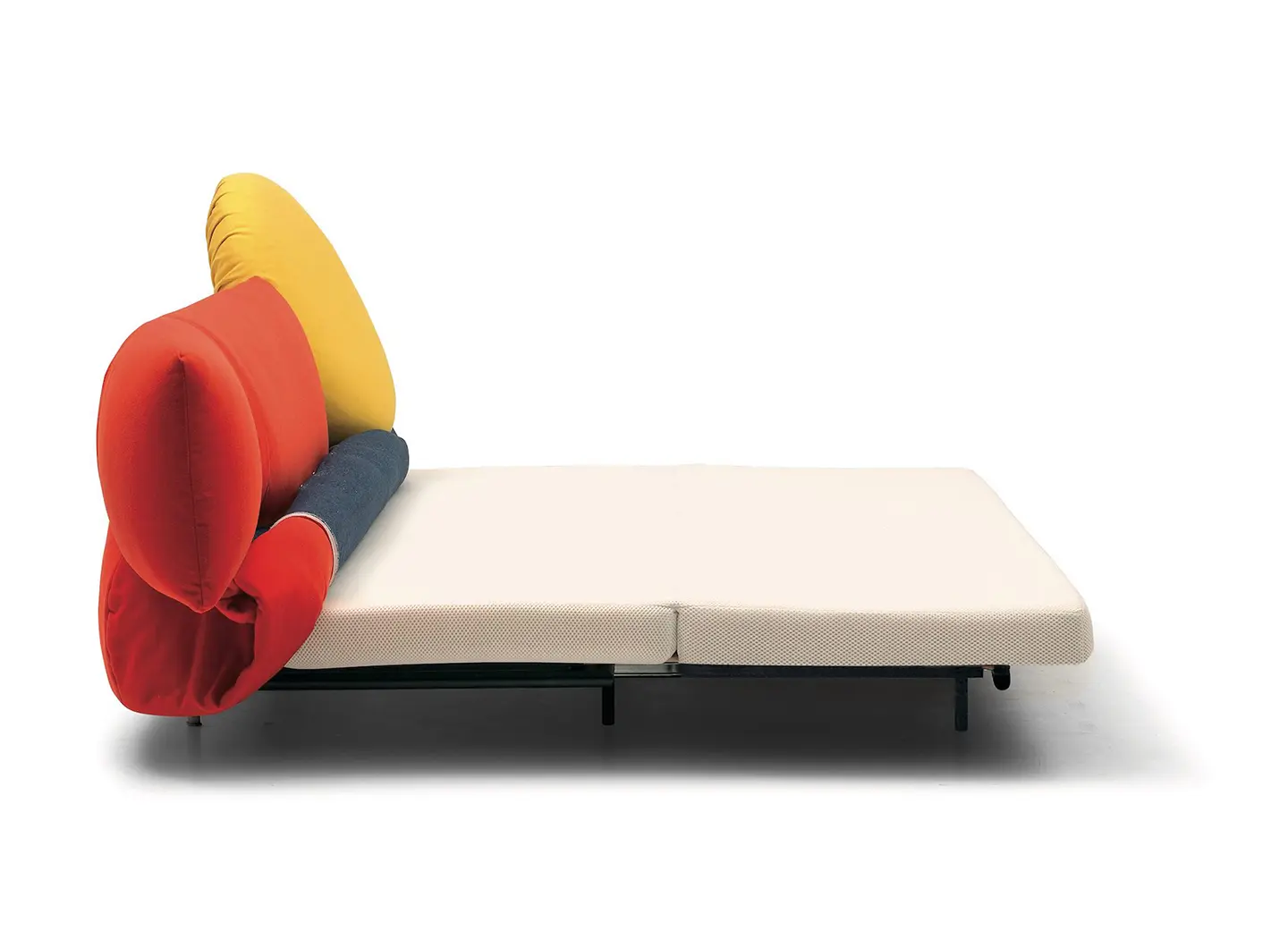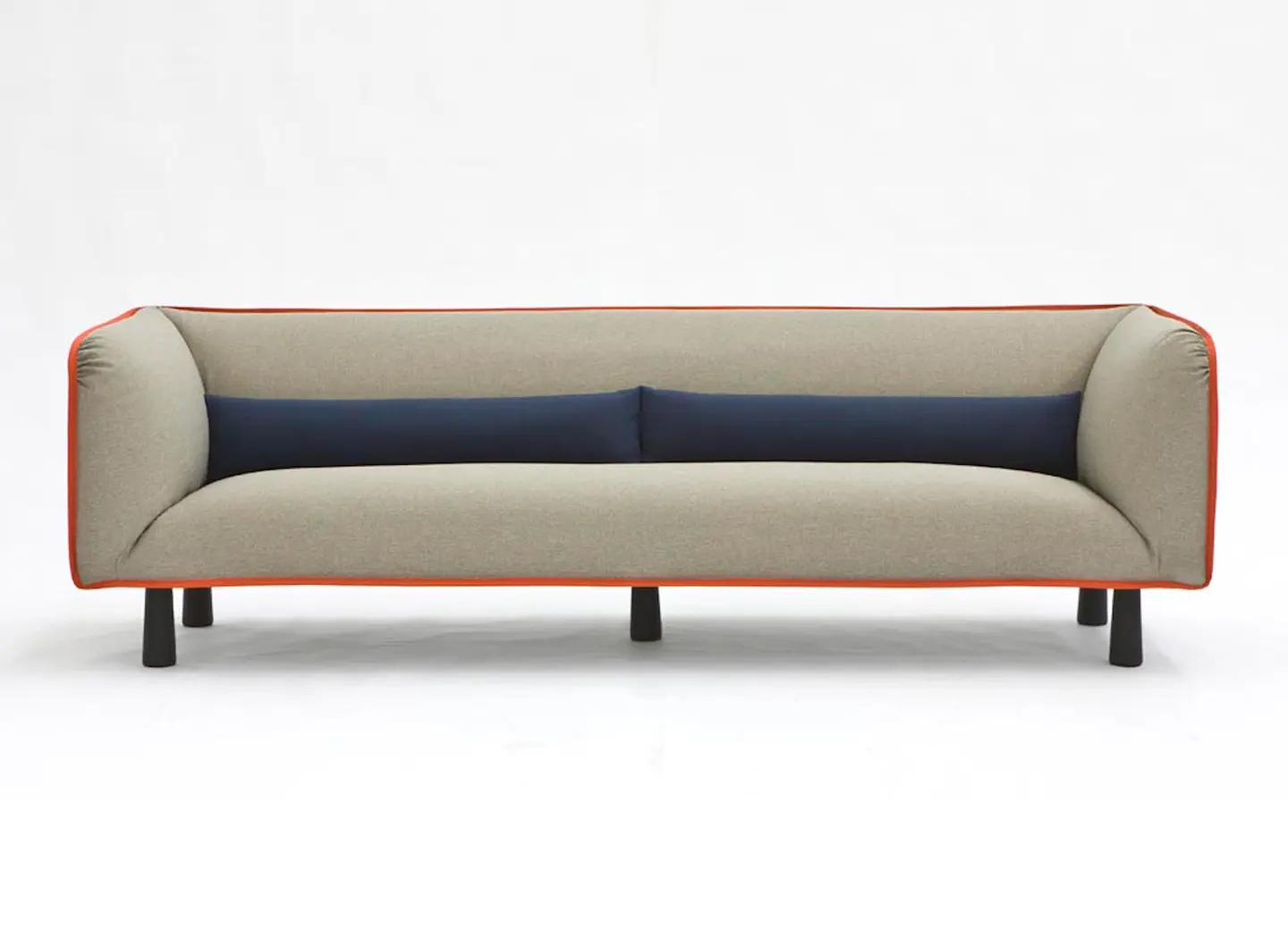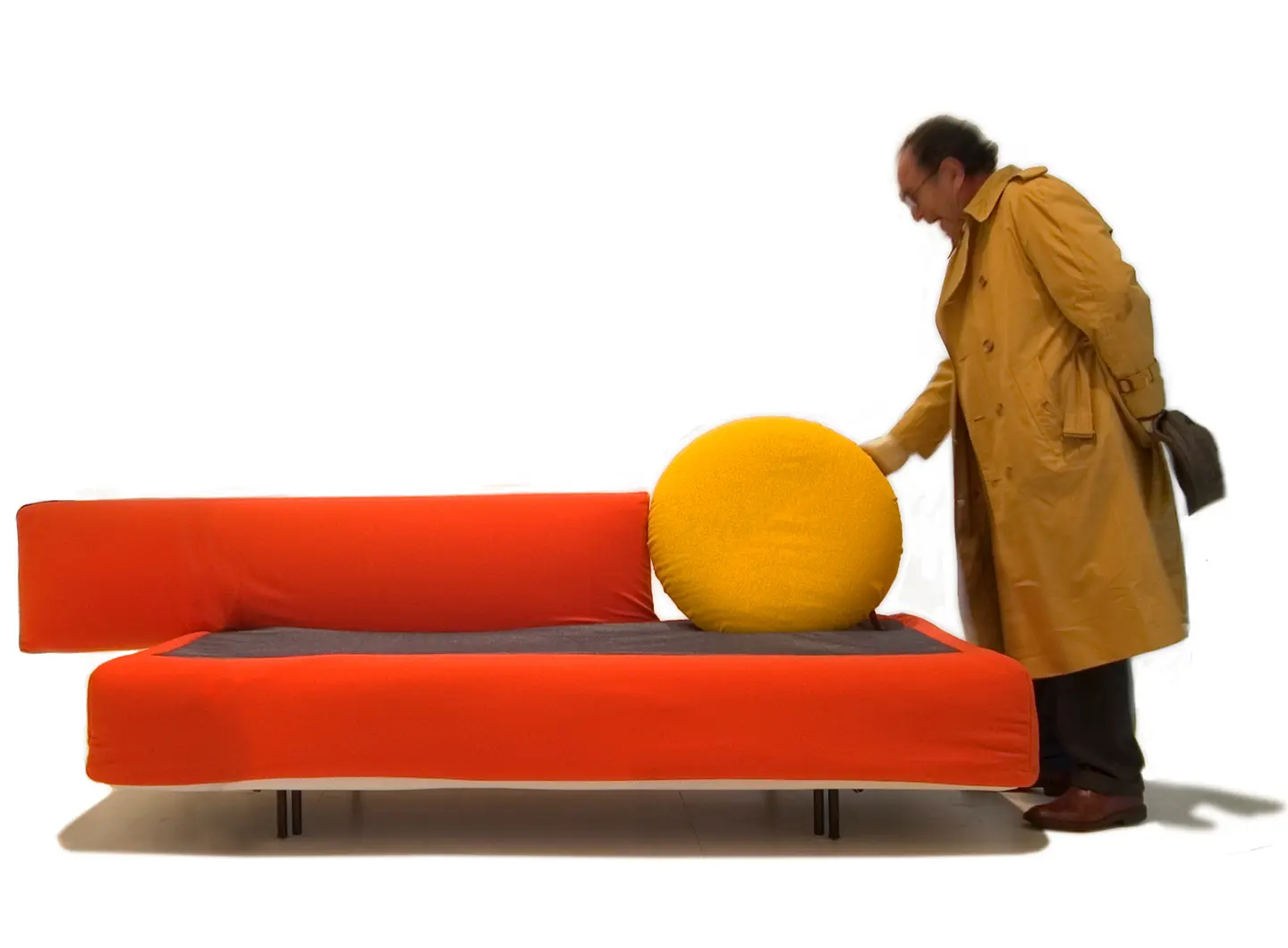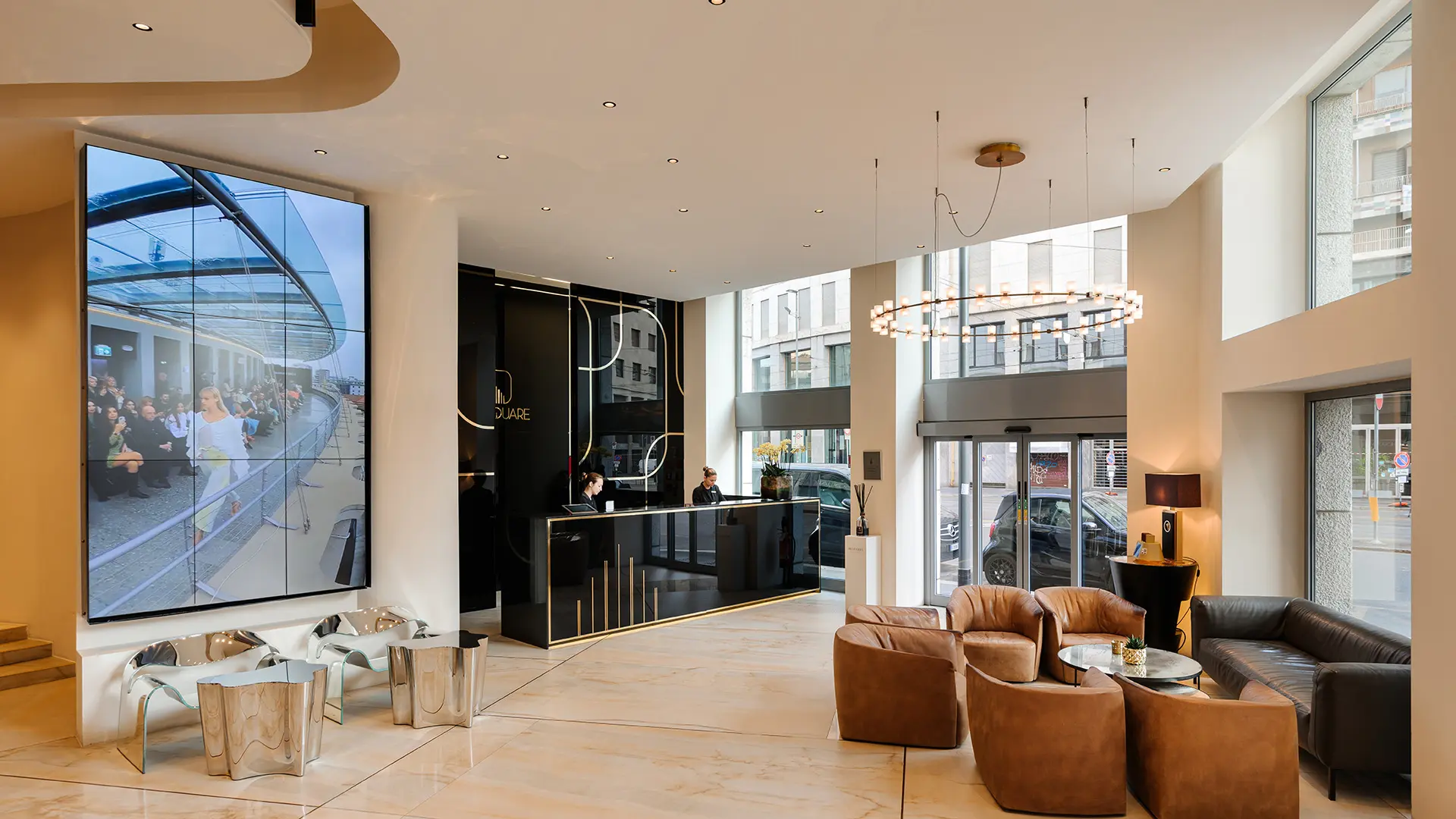In partnership with MiCodmc, a selection of establishments ripe for discovery during the 64th edition of the Salone del Mobile.Milano, from 21 to 26 April 2026
Vico Magistretti’s upholstered furniture, a paean to flexibility
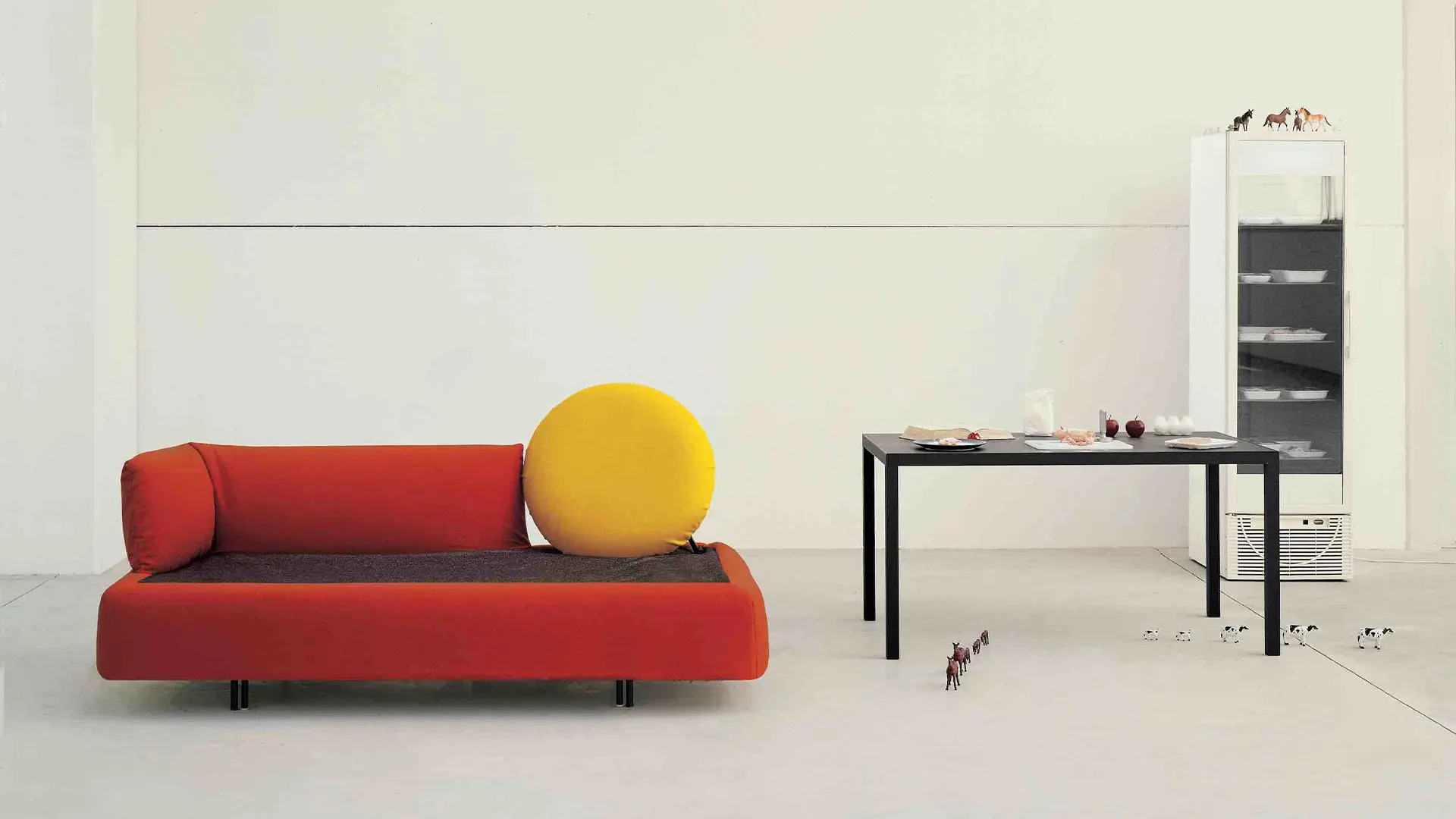
Vico Magistretti, Oblò, ph. courtesy Campeggi
His sphere of activity ranged from spoons to cities, but it was on the domestic front that the great Milanese architect and designer had most of his legendary brainwaves. These included the idea of designing armchairs and sofas that kept step with the evolving lifestyles, taking on different forms and serving a variety of functions at a simple touch or movement
Updated on September 13rd, 2023. The upholstered pieces designed by Vico Magistretti (Milan, 1920 - Milan, 2006) during the second half of his long and successful career are flexible, versatile and transformable (often thanks to a hidden mechanism), responding to the changing demands of daily life, rigorous from an aesthetic point of view while blessed with a healthy pinch of irony. In the late Seventies, after designing the Maralunga sofa for Cassina, which netted the ADI Golden Compass Award and went on to become a long seller, the great architect and designer was fired by a need of his own – to furnish a small flat in London, a sort of pied à terre which he stayed in while teaching at the Royal College of Art – to design a range of folding and easily transportable furniture based on a combination of constant section wooden parts. This was the Broomstick collection, produced from 1979 onwards by the recently-formed Bergamo-based firm Alias and which consisted of a chair, a table, an armchair, a coat stand and a bookcase which, perhaps more than any other project, embody one of Magistretti’s favourite aphorisms, very often quoted when discussing his work: “look at usual things, with unusual eyes.”

Vico Magistretti, Regina d’Africa, ph. courtesy Fondazione Vico Magistretti
The name, said to have been suggested by the American designer George Nelson, refers to the broom handle, an object in daily use, cheap and robust, with which the pieces are made. Its shape informs the entire operation, not unlike other, earlier experiences, from the assemblage of objets trouvés in various projects by the Castiglioni brothers to Enzo Mari’s Proposta per un’Autoprogettazione [Proposal for a Self-Design]. The Regina d’Africa [Queen of Africa] armchair, for instance, has a grand name that is intentionally at odds with its simplicity – a folding wooden chair with a padded canvas seat - and its ease of use.
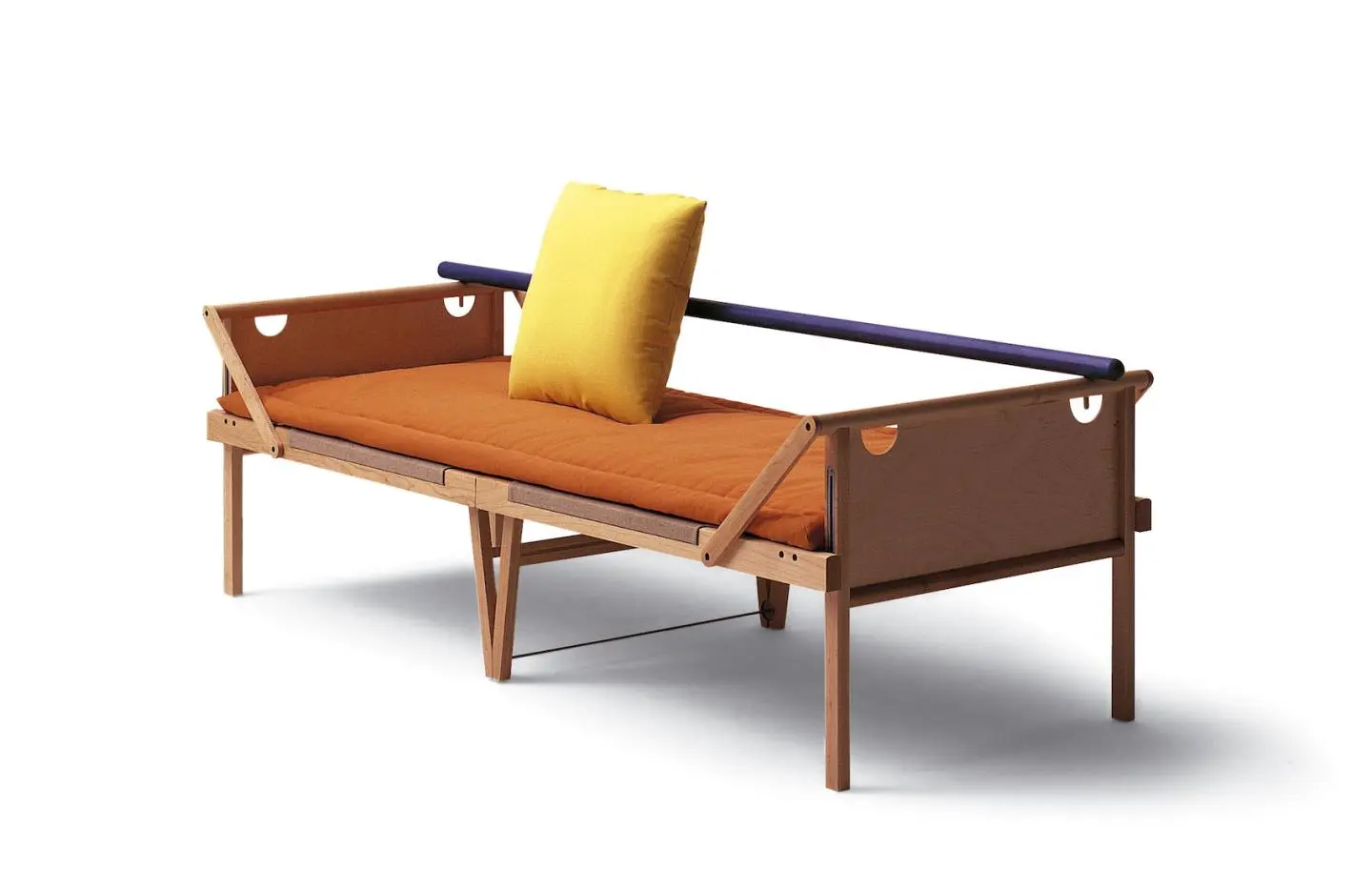
Vico Magistretti, Ospite, ph. courtesy Campeggi
During the 1990s and 2000s, another relatively new firm - Campeggi, founded in the 1950s but which started working with designers as of 1979, when Claudio Campeggi decided to bring in a more experimental line alongside its sofabed production – proved to be an ideal match for a series of projects for furniture that could be modified as required and distinguished by its playful feel. The Ospite sofabed, produced in 1996, is lightweight and not remotely bulky at a mere 13-centimetres thick, ready to serve as an emergency bed at a moment’s notice, folding away again when the guest leaves. Magellano (2004) draws inspiration from a gesture that fascinated Magistretti, throwing a cover over a sofa or armchair to gauge its effect, and which also inspired Sindbad more than 20 years earlier. In this case, a coloured rug, softly spread over the elementary frame of a chair can turn it into a sofa, chaise longue or guest bed. Oblò, launched in 2005 in a combination of vibrant colours, dominated by “Magistretti Red,” but also available immediately in many other shades, is one of the great designer’s last furnishing pieces and is a real “transformer.” The large round cushion rotates on a pivot and can be used as either a back or head rest, transforming the sofa into a chaise longue, single or double bed. There is no standard or correct configuration, while no single function prevails over the others.
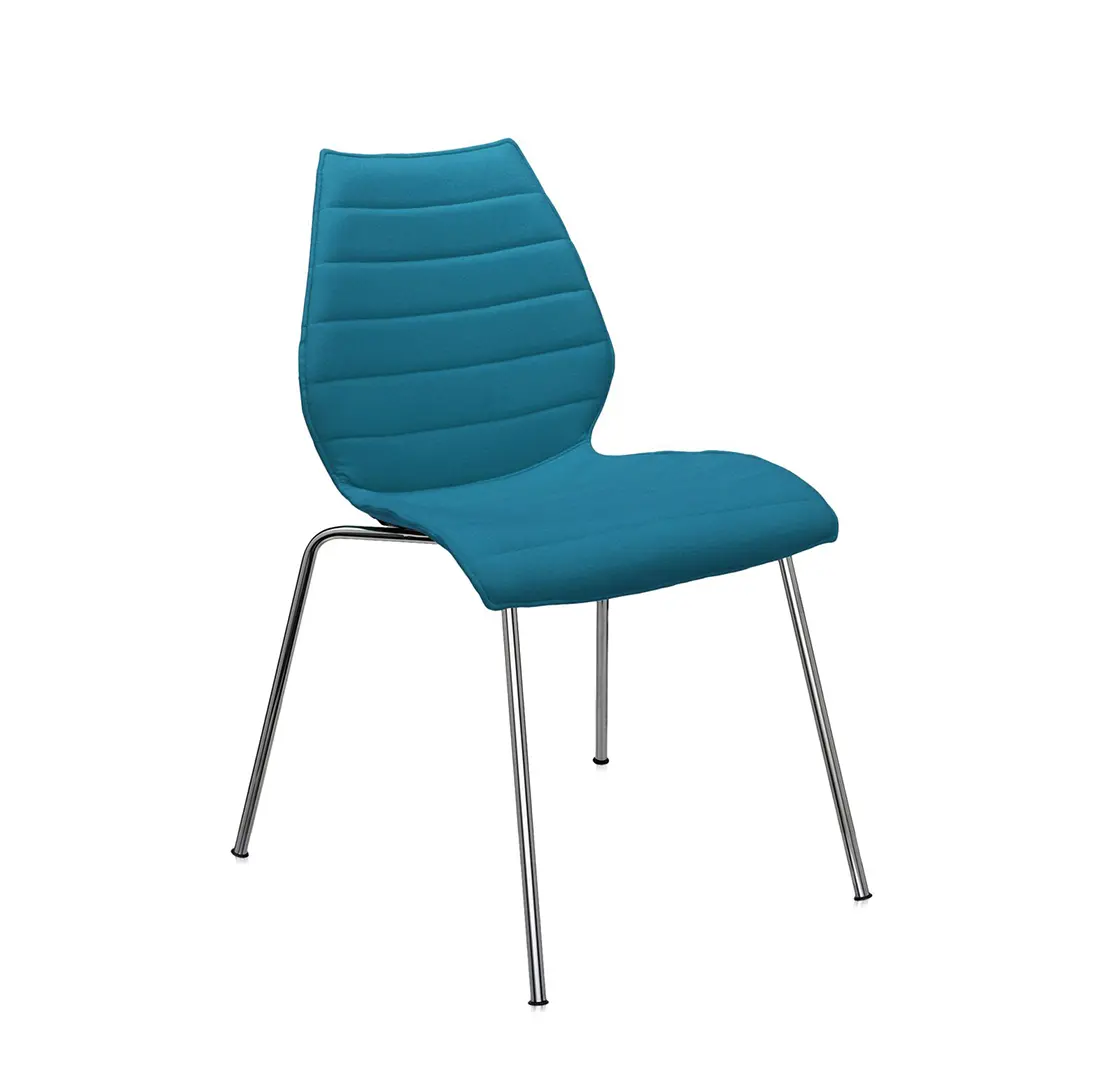
Vico Magistretti, Maui Soft Trevira, ph. courtesy Kartell
With its curved silhouette that, when the recesses and the projections are inverted, is reminiscent of one of the milestones of Scandinavian design, Arne Jacobsen’s bent plywood chair, Maui, designed for Kartell between 1995 and 1996, ushered in a new era of monocoque plastic chairs designed to take the weight of a human being without resorting to ribbing or reinforcements. The preparatory sketches held in the Vico Magistretti Archive, are testament to a “simple” creative approach, the shape springing naturally and intuitively right from the early design stages, although later requiring a lengthy process of honing and structural verification at the factory. The “soft” version, upholstered and covered in Kvadrat or Trevira fabric, was presented in 2013 as a homage to the master, who had died just a few years earlier, in 2006.
Check out the previews


 Stories
Stories
